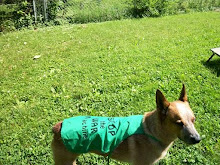Richard is definitely NOT someone that would fall into the category of the “deserving poor.” Richard is a wheelchair bound guy who lives on the street. His addictions and his history with the law disqualify him from being eligible for lots of services, although he does receive a disability check. That check is a blessing and a curse. A blessing because it means that he has some financial means and can get Medicaid to help him address his many health problems. A curse because it makes him a target of street predators—the guys who are your best friend in the world from the 1st of the month until the money runs out, which with their help is usually sometime around the 10th. With friends like that, Richard doesn’t need enemies.
Not that he has a lot of enemies. It is more that he and his wheelchair, although fixtures around downtown, are virtually invisible to most people.
I was on my way home from a meeting, approaching Broadway, our main downtown street. The light ahead was yellow, so I slowed down. As I braked, I noticed Richard on the corner on the other side of the intersection, waiting for a green light so he could cross in front of me.
My light turned red, and Richard wheeled away from the curb. Now downtown Columbia tries to be accessible to folks with disabilities, and thanks to Get About Columbia, a group promoting non-motor transportation, the curbs reduce to ramps at all the downtown intersections. However, Columbia is also obsessed with beautifying the downtown area. As part of the beautification effort, the crosswalks and the ramps leading to them are stamped in to look like brick and other bumpy substances. When Richard’s wheelchair met up with the stamped brick bumps, he stalled and fell out of his chair onto the street. A passerby hurried into the crosswalk to help him. I stayed in my car.
The light turned green.
Richard was still on the ground, so I stayed put. Unfortunately, the driver of the large SUV behind me either didn’t see Richard on the ground or didn’t care. They honked and honked. I pulled into the crosswalk on my side of the street and hit my brakes twice, in an effort to let the driver behind me know there was a reason I was stopped. The SUV driver honked again, and as the light turned yellow, served around me and headed into the intersection. Luckily, by this time, Richard was getting back into the chair and almost sitting up straight. The SUV narrowly missed the chair; if Richard had still been on the ground, he would have been lunch meat.
I called out to him, and he waved. I waited through another red light while the good Samaritan who had helped him back into the chair guided him across the street. As I drove by, I leaned out the window to ask if he was okay. He said he was, and thanked me. Then we both wheeled off in our separate directions.
Sometimes I talk about seeing the face of Christ in the distressed disguise of a homeless person, in the tradition of Dorothy Day and Mother Theresa. But tonight, I think what was really important was seeing the face of Richard where others saw nobody. Tonight I learned that to see the face of the Invisible is to really encounter the divine.



